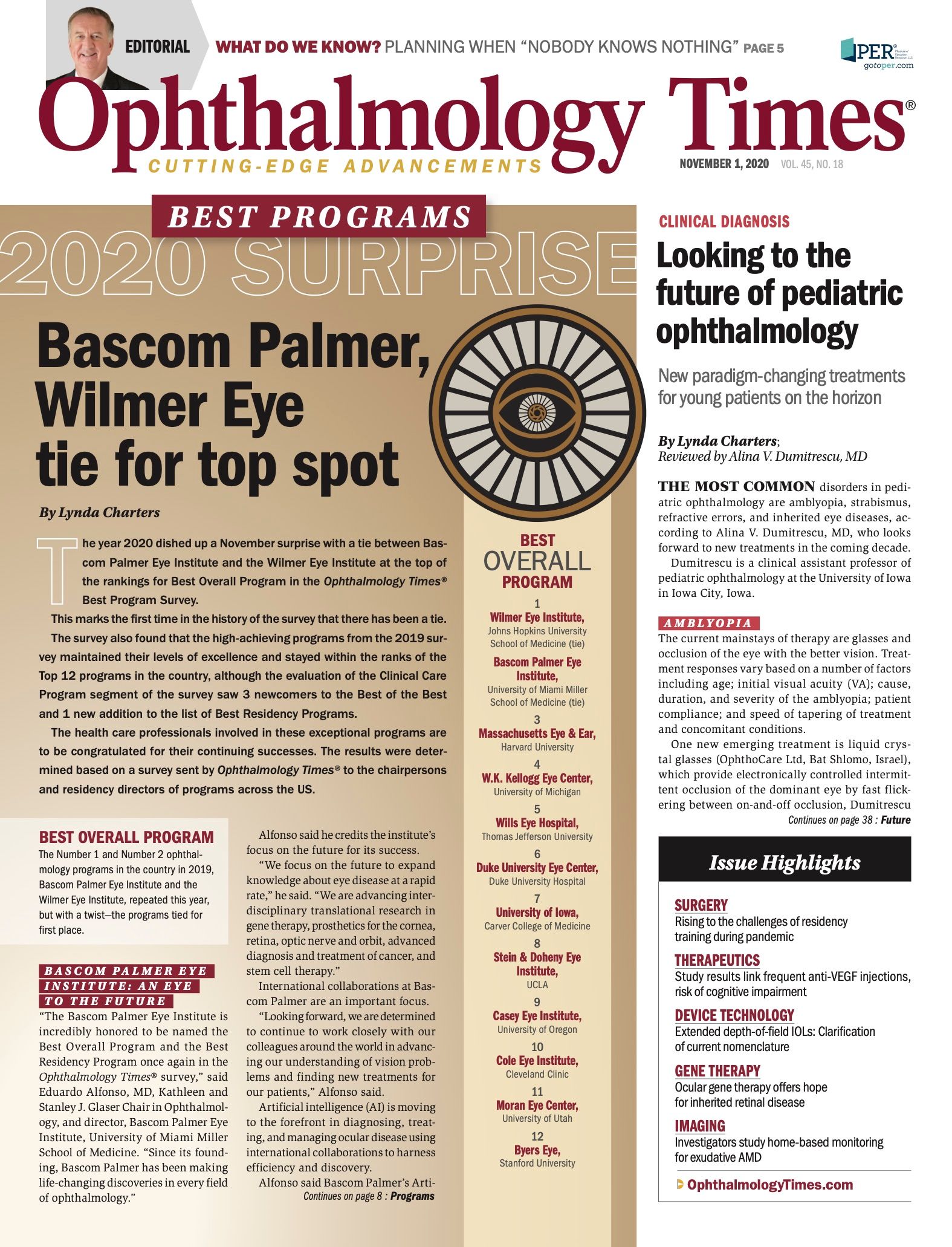Publication
Article
Digital Edition
Developing retinal technologies strengthen visualization
Author(s):
Newest advances improving ophthalmologists’ performance in operating room.

This article was reviewed by Audina Berrocal, MD
The greatest innovations in retinal surgery have been technological. One example is the trocars developed within the past 20 years that eliminate retinal holes and vitreous incarceration at sclerotomy sites.
The latest advances comprise 3-D surgery, intraoperative optical coherence tomography (OCT), new stains, instrumentation that consists of smaller-gauge, disposable advanced technology, and advanced vitrectomy probes, said Audina Berrocal, MD, a professor of clinical ophthalmology at Bascom Palmer Eye Institute, University of Miami Miller School of Medicine in Miami, Florida.
She said these advances have improved surgical performance.
Related: Improving surgical safety, efficiency, and outcomes for patients
Invaluable innovations
Intraoperative OCT facilitates operations needed during gene therapy, such as detaching the retina and injecting viral vectors under the retina.
“This technology makes me a better surgeon and allows me to make difficult decisions easier in the operating room,” Berrocal said.
Berrocal demonstrated removing a cataract from an infant with persistent fetal vasculature (PFV). Beyond removal of the cataract, the technology also visualizes the stalk inserted into the posterior capsule of the lens and facilitates knowledge of the foveal anatomy in the macula of such infants.
“Knowing that a functional macula is present allows parental counseling about patching therapy and visual expectations for their child,” Berrocal said.
Berrocal demonstrated a 3-D surgery with intraoperative OCT (EVA system, DORC) that provided high visibility of all procedures in a patient with persistent fetal vasculature.
She demonstrated the separation of the stalk from the posterior capsule using a vitrector. The technology also permits the surgeon to look for the foveal center; in this case, the fovea was captured in the stalk.
“3-D OCT has improved the way we perform surgery in these very delicate eyes,” Berrocal said.
Related: Gene panel offers expanded diagnostic capability of inherited retinal diseases
The Finesse Flex Loop (Alcon) is retractable and acts as a scraper to remove the hyaloid membrane. If the hyaloid membrane does not remove easily with the vitrector, one may use the flex loop at the optic nerve or at the fovea.
Once the hyaloid membrane has been removed, Berrocal shortens the loop and uses it as a pick. Berrocal said the instrument has a consistent contact profile in contrast to earlier versions. It is open in the middle, so that as one scrapes, one visualizes the retina.
The loop also can be used as a lasso. Berrocal said that in a demonstration, a physician used the loop to capture a cyst through a retinotomy. She said she has used this instrument to remove intraocular foreign bodies and under the retina to remove proliferative vitreoretinopathy bands.
A new stain, TissueBlue (DORC), was approved recently by the FDA. This stain is heavy and deposits easily on the macula. The product is packaged premixed in individual syringes, in contrast to indocyanine green (ICG), which has to be mixed in the operating room. The premixed stain eliminates potential toxicity or mistakes associated with the mixing of the stain before use.
The Finesse Sharkskin forceps (Alcon) is a new instrument for peeling of delicate internal limiting membranes that easily grasps tissue because of rough edges at the tips that facilitate easy elevation, Berrocal said.
Related: Exploring four decades of change in retina
Perfluorocarbon is not new, but is the best stabilizer of giant retinal tears and serves as an aid to identifying retinal holes that are difficult to find.
Berrocal showed a small 27-gauge surgery (Alcon) performed on a patient with Marfan syndrome in which the lens was subluxated. During a vitrectomy, the vitrector is used to aspirate the lens in the capsular bag.
This small instrument allows elegant techniques to be performed more readily. DORC has developed a 27-gauge vitrector for infants’ eyes and smaller-diameter trocars. One asset of this kit is that it is sutureless, contrary to the Alcon 25-gauge short.
The small-gauge surgery with a beveled tip to the vitrector and 3-D viewing system have new cutters that perform 20,000 cuts per minute. The tip also allows the surgeon to be extremely close to the retina to perform difficult dissections of tractional retinal detachments without damaging the retina.
Related: Retinal implant improves quality of life in patients with RP
Conclusions
Berrocal said ophthalmology is a field full of innovations.
“Vitreoretinal surgeons are constantly pushing for new technologies,” she said. “Industry is key for innovations in our field, and our relationship with industry is important to bring our ideas to fruition. The technology that we have is great, but can always be better.”
Read more by Lynda Charters
--
Audina Berrocal, MD
e:aberrocal@med.miami.edu
Berrocal is a consultant for DORC and Alcon.

Newsletter
Don’t miss out—get Ophthalmology Times updates on the latest clinical advancements and expert interviews, straight to your inbox.




